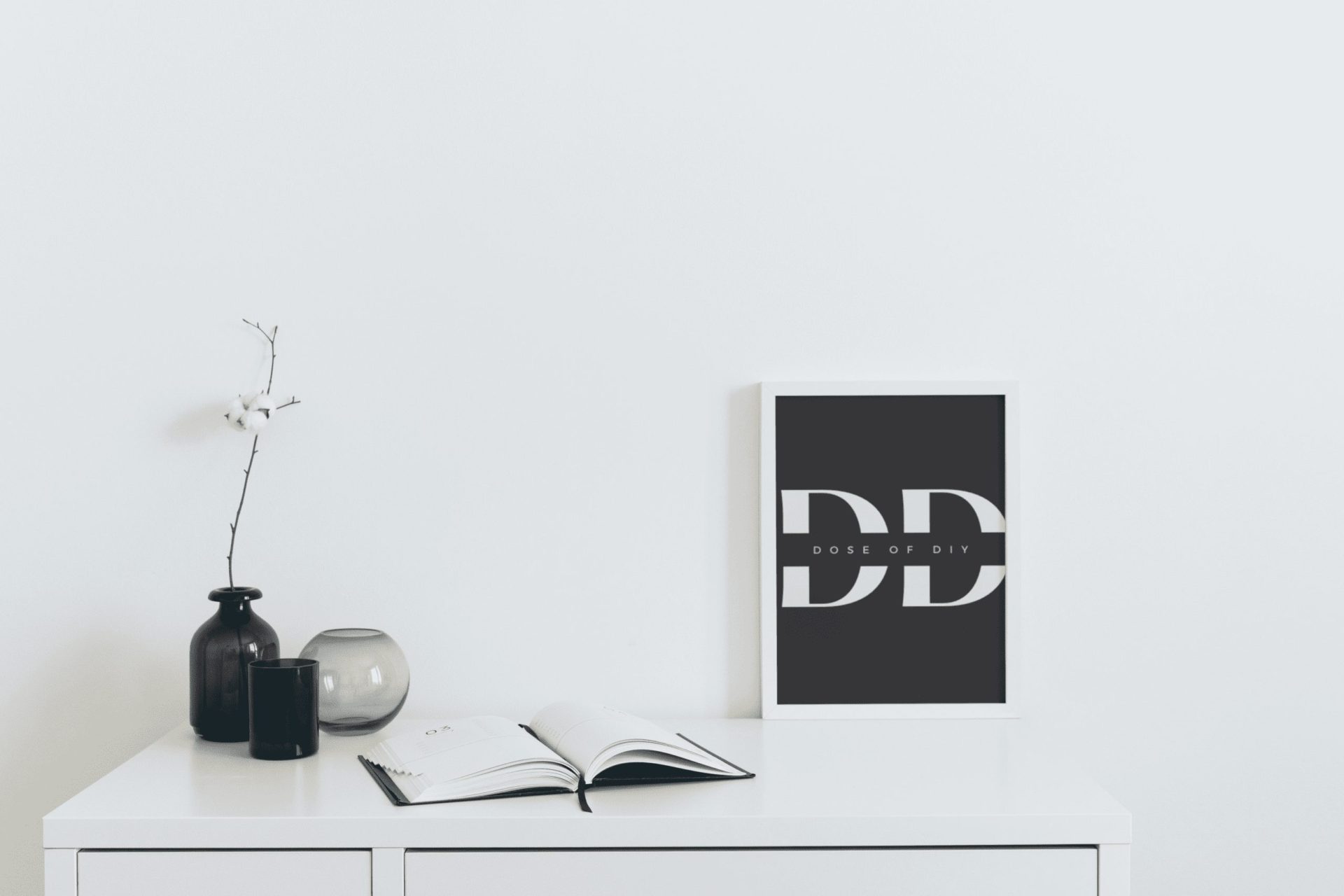
As an Amazon Associate I may earn from qualifying purchases at no additional cost to you!
Materials
- Ejoy Wall Cladding Board in Drift Wood
- PrimeLinx 1 in. x 8 in. x 12 ft. Radiata Pine Finger Joint Primed Board
- Kreg pocket hole screws
- Ravinte 3/4 inch overlay soft close hinges
- Gorilla Max Strength Clear Construction Adhesive
Optional:
- Kreg pocket hole plugs
- Coconix floor and furniture repair kit
- magnetic push latches – to be able to open the cabinet door without a handle
Tools
- Dremel compact circle saw
- saw track
- drill
- Kreg pocket hole jig
- clamp
- miter saw
- Kreg concealed hinge jig – to drill the hole for the hinges
Either
- pneumatic brad nailer
- air compressor – you don’t need this if you have a cordless nailer
- 1/4″ NPT air compressor tool kit with hose and accessories – you don’t need this if you have a cordless nailer
or
Steps
I recommend checking out my video on YouTube on how I made my kitchen storage cabinet since I am not the best at describing things. Be sure to subscribe to my YouTube channel!
Otherwise, I’ve broken it down into the following steps. You can click on the step below to jump to that section or just keep scrolling along!
1. Build kitchen storage cabinet framework
- First, measure the space on the side of your fridge to see how much room there is. For me, it was about 8 inches, so I bought these 1″ x 8″ boards to be the framework for my cabinet (my ceilings are about 105″ so I got the 12 ft long boards)
- Then decide how wide you want your kitchen storage cabinet to be. I knew I didn’t want it to be the full width of my fridge, so I arbitrarily chose 24″ — If I had to do it again, I would have picked the width based on whatever the width of the cladded boards are so you don’t have to cut any of them length-wise!
- When cutting boards that I want to be the same length, I use what I call a “stopper” — this is an item that you can use to line up the board to make sure that you are cutting boards to be the exact same length. My video on YouTube explains this better, so check that out!
- Then use the nail gun to attach the boards to the wall

- Following that, attach a board to the ceiling that is the width that you decided you wanted your cabinet to be

- Then attach the other long framework board to that board on the ceiling
- When you are done with that, use a Kreg pocket hole jig to add any shelves that you want. I only added one at first because I wanted to use it to store my vacuum, broom, and swiffer. So I wanted to make sure I had enough height for that before I added any other shelves. I ended up adding a second one after I placed everything.
- See my YouTube video about how to use a Kreg pocket hole jig if you haven’t used one before!

- Then use Alex painters acrylic latex caulk at the seems to give it a smooth, finished look
2. Cut & place cladded wall panels
- First, I lined up the cladded wall panels to see where I need to cut them (Again, if I had to redo it, I would pick a width that matches up with the width of the panels so I wouldn’t have to cut them)
- I usually use my saw track to help me cut straight lines, but for the cladded wall panels, they were longer than my track. So I used a spare wall panel as my “track” and the same idea applies. Check out my YouTube video about how to saw a straight line for beginners (and if you don’t have a dangerous table saw)

- Then I glued the wall panels to the framework and to each other using Gorilla Max Strength Clear Construction Adhesive. This included smaller pieces that would go on the back side of the cabinet. This way it would look good no matter what angle you were looking at it from (see image below).



- Then I clamped the boards to the framework while allowing the glue to try to make sure it didn’t slide out of place while the glue was still wet

- I used the Coconix floor and furniture repair kit to mix the color of the cladded wall panels and paint the edges that I had cut to hide where I cut them. If you haven’t used a universal repair kit before, check out my YouTube video on them!
3. Make kitchen storage cabinet door
- First, I glued the panels that would make up the door together

- Then I used a horizontal board to help secure the panels together. I also used that horizontal board to attach the door to the framework
- To do this, I used the kreg concealed hinge jig to make the holes for the hinges on the horizontal board. Since it’s a large door, I used 4 hinges

- Then I attached the horizontal board to the framework

- Then I used the clear construction adhesive to attach the door to the horizontal boards

- When I was attaching the door to the framework, I put paint sticks under the door to make sure the door wouldn’t scrape against the floor when it opened
- Then I put clamps holding the door to the horizontal boards while the glue dried

- After the door was attached, I added magnetic push latches so that I could open the cabinet door without a handle. This way it was hidden and looks like a decorative column when it’s really a storage cabinet!
That’s all there is to it!
I used mine to store cleaning supplies (see image below), but you could also use this space for additional pantry space!


Be sure to comment to let me know your thoughts or if you have any questions! And please share any pictures if you recreated this in your home!
Of course, don’t forget to subscribe to my channel!
And don’t forget to check out my entertainment suggestions if you get bored!
Lastly, if you want to add a storage cabinet, but aren’t in love with the look of what I did, check out my Hidden Storage Cabinet Pinterest board for more inspiration!






Leave a Reply